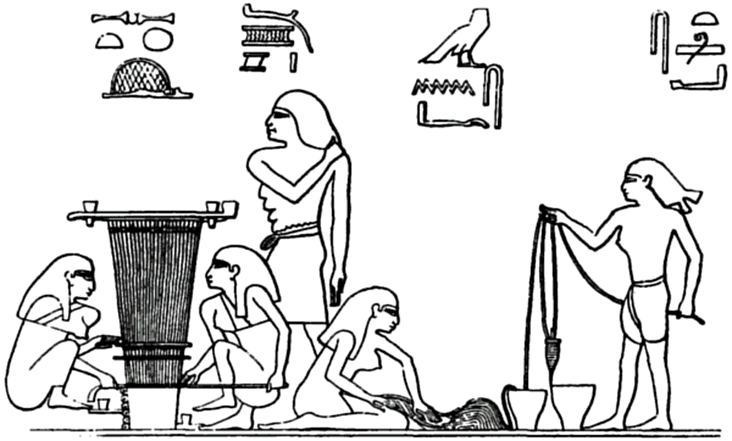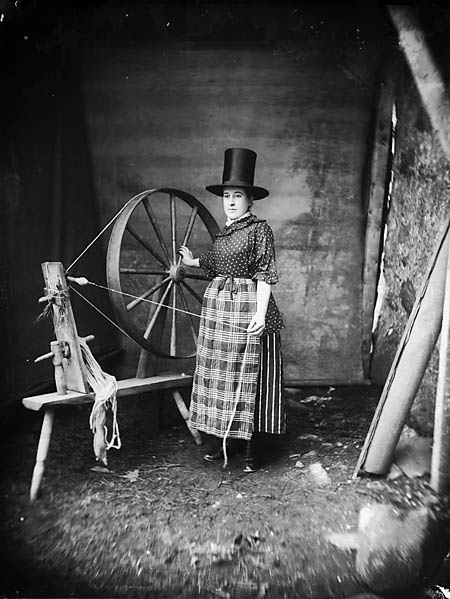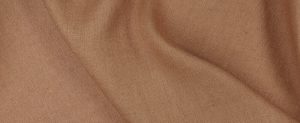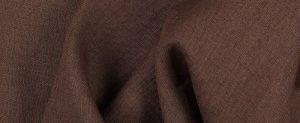A Brief History of Linen
This will be the first in a series of blog posts where we will take a closer look at natural fabrics such as linen, cotton, and wool, and their journey through the ages. Today, natural fabrics can be found in all shapes, styles, and forms from basic undergarments to high end fashion. In decades past, fabrics were’ valuable commodities due to the time it took to process the raw materials and weave cloth. People were limited by what fabrics could be sourced locally unless they were very wealthy. For example, today, cotton is considered an “everyday” fabric ranging from cheap t-shirts to designer jeans. Centuries ago, it was a prized import fabric from places like India and China and made into fancy day dresses and house robes for wealthy men. ‘ Exploring the history of fabrics gives us a glimpse into the daily lives of people in times past as well as the economic and social forces that shaped fashion.
First up is linen, one of the oldest textiles developed, dating back nearly 10,000 years. Most people associate’ linen fabric with more expensive clothing, fancy tablecloths and napkins. Historically, it was a staple of everyday clothing, especially undergarments, until the invention of cotton gin in the late 1700s made cotton production more cost efficient. Let’s take a moment and explore the rich history of linen.
Bast Fibers
Linen is made from the cellulose fibers of the inner bark the flax plant. These fibers are called bast fibers and flax is one of several types of plants including hemp, jute, and raime, which produce them. Materials made from bast fibers all have similar properties such as drying faster than either cotton or wool and being stronger when wet. This is probably a key reason why items such as rope and ship’s sails were made from bast fibers before modern synthetic materials were used.
Turning bast fibers into cloth is a long process. Unlike wool where raw fleece can simply be washed and then either carded or combed into a preparation for spinning, bast fibers need to be separated from their woody stems and prepared for spinning in a multi-step process.
After the flax is harvested, the seed pods are collected for planting next season. The flax must be soaked’ to soften the woody outer stems, called retting. Retting can be done through one of two methods. The first is by soaking the flax in a stream or a tub. The second is by dew retting, where it is laid out on a field in the fall where it is soaked by the dew. Careful attention must be paid to the flax as if it is left out too long, it rots and spoils the inner fibers. Stream or tub retting can take several days while dew retting can take a few weeks.
 Flax laid out in a field for dew retting
Flax laid out in a field for dew retting
The retted flax is then dried and ready for processing. First the dried flax is passed through the jaws of the flax breaker to loosen the strands of flax from the inner core, called the boon. Then the flax is scraped with a scrunching knife to remove the roots and blossom ends. Lastly, the flax is drawn through a set of spikes called a hackle. This separates the boon from the flax. Continued hackling separates the long strands of flax from the short bits called tow. Tow was used for coarse cloth such as sacking, packing materials like ancient packing peanuts, or caulk for seams. The resultant long fibers are bundled together as flax strick and stored until they are needed to be spun into linen. When the entire process is completed, over 85% of the flax plant has been stripped away to make strick for spinning.
 A woman demonstrates flax processing at a festival in Finland
A woman demonstrates flax processing at a festival in Finland
 A Russian peasant woman processing flax around 1910s
A Russian peasant woman processing flax around 1910s
It wasn’t until the 1830s when a mechanical means for hackling was first invented. Until then, flax production and preparation was done entirely by hand.
Linen in History
Flax was one of the first crops to be cultivated in the fertile crescent as far back as 7000 BCE. Linen artifacts have been dated to the Dead Sea as far back as 6000 BCE. The earliest linen artifacts in Europe date back to around 4000 BCE in Swiss lake finds. It was the Babylonians who first started weaving flax and are credited with starting the linen trade. But it was the Egyptians who are known for linen in the ancient world.
Because of the extremely dry climate of the Egyptian desert, textile finds in Egyptian tombs have been remarkably well-preserved. In addition to the miles of linen wrapping the mummies, bolts of linen cloth have been found in pharaoh’s tombs as well as fine linen dresses, tunics, and linen housewares.
 Line drawing of an Egyptian tomb painting showing textile production
Line drawing of an Egyptian tomb painting showing textile production
 Kerchief from Tutankhamun’s Embalming Cache’ ca. 1336-1327 B.C.
Kerchief from Tutankhamun’s Embalming Cache’ ca. 1336-1327 B.C.
After the Ancient Egyptians, linen continued to be a staple of clothing in the Western world for many’ centuries. It was commonly used for undergarments and sleepwear for all classes of people in Europe in all climates and seasons. Linen was also woven into bedsheets, napkins, and other household fabrics. It’s no wonder that during the Middle Ages’ the term “linens” became to be synonymous’ for household items such as bedding, tablecloths, and towels. The term survives to this day even though linens are made from a range of fabrics.
 Medieval women hackling flax, spinning flax, and weaving
Medieval women hackling flax, spinning flax, and weaving

 Work Bag,’ Linen worked with wool thread; double running and herringbone stitches, Great Britain 1669
Work Bag,’ Linen worked with wool thread; double running and herringbone stitches, Great Britain 1669
In the American colonies, linen production was common in farm households. A’ family would have their own plot of flax, which they would harvest, process, spin, and weave each year. Homespun cloth would be combined with commercial cloth in the household to make clothing and linens. Self-sufficiency was a source of great pride for the American colonists and textile production was one way of showing it.
 Mid-18th century, American, Linen Wool Girl’s Dress
Mid-18th century, American, Linen Wool Girl’s Dress
 Phebe Warner Coverlet,’ Probably Sarah Furman Warner Williams,’ ca. 1803
Phebe Warner Coverlet,’ Probably Sarah Furman Warner Williams,’ ca. 1803
Leading up to the Revolutionary War, the boycott of British goods was in full swing. Women, such as the Daughters of Liberty, routinely held spinning bees in town squares to show off their self-sufficiency and spinning excellence. This was an especially harsh smack in the face to the British textile industry, which dominated all of Europe at the time.
Homespun linen production continued through the early 1800s but waned as textile production became more industrialized. The invention of the cotton gin in 1793 made cotton production more economical than linen production. Cotton production in the United States doubled each decade from 1800 because the cotton gin meant that fewer slaves were needed to process cotton thus they could be sent to the fields to plant and harvest it instead. Mechanization in the spinning and weaving of cotton further fueled the cotton industry so that it quickly overtook linen as a cheap, everyday working fabric. For example, spinning mills for cotton in Lowell, MA were in operation in the late 1790s whereas mechanization of linen spinning did not come about until the 1830s. Even with the mechanization of flax processing, spinning, and weaving finally starting in the 1830s and 1840s, flax would never catch up to cotton production.
By the mid-1800s, most small farms in the United States no longer grew or processed their own flax and there was plenty of commercially available cloth. Home textile production saw a small revival during the American Civil War but died down again when the textile mills went back to producing civilian goods and supply routes were reopened to the South. Linen was still used for specific-use fabrics such as buckram, bedding, and canvas as well as work clothing and underclothes. Production became more specialized focusing on fine linens for tablecloths, drapery, and napkins as seen with the famous Irish linen. Linen was also used for finer clothing as it was perfect for starched uniforms and crisp cuffs or nice summer clothes. Towards the late 19th century, one of the trademarks of men in the upper classes was a warm-weather suit made of light colored linen. Women also had summer or warm weather linen suits, dresses, and riding habits, especially in the Southern United States and warmer climates such as the Caribbean and Mediterranean.
 A woman in a linen chemise or shift (underwear) from the Bath of the Nymphs by Francesco Hayez, 1831
A woman in a linen chemise or shift (underwear) from the Bath of the Nymphs by Francesco Hayez, 1831
Linen Today
Today linen is being rediscovered as an everyday fabric as well as a luxury fabric. ‘ Improvements in linen production have made linen more affordable and it is seeing a return as an everyday fabric. Clothing made of linen and linen blends are now found in popular box stores like H&M and Old Navy.’ The linen suits for men are also making a come back for the summer months, especially since vintage-inspired styles of The Great Gatsby and Boardwalk Empire’ are popular on the runways.
In recent years, linen has made its way back into high fashion. Stella McCartney’s 2011 collection included a silk-linen blend blazer and Valentino had a cotton/linen dress. For the discriminating bride, Lanvin offered a $6000 cotton and linen wedding dress. Linen is going strong for the 2015 spring season as major designers like Michael Kors, Donna Karan, and Lanvin, all have linen pieces in stores. Linen is currently only grown in few regions in Europe so fashion designers often advertise their linen from where it is produced such as “Belgian linen” or a specific region in France to increase its appeal.
Independent designers have also embraced linen.’ Out in California,’ designer Jessie Kamm’s Spring 2015 collection is full of easy wearing, airy linen pieces that will fit into any wardrobe. The company Flax specializes in linen clothing for women and puts out several collections each year in a range of fabric weights. Their annual barn sale attracts devoted fans of the clothing line’ from all over the United States. Vivid Linen is another modern clothing company that uses only linen. They carry a wide range of selections for both men and women from casual resort wear to men’s suits. Faircloth and Supply are another favourite of ours, based in Los Angeles they are a women’s season-less charitable company who make the most stylish, comfortable and gorgeous linen only collections. Apart from soft and timeless clothes, every purchase helps a Nepalese girl out to get through education. “With every purchase you give one Nepali girl a school uniform, school supplies and a scholarship to attend school for one year to empower herself through education.”
Faircloth & Supply Jesse Kamm Linen Trench
Jesse Kamm Linen Trench
Linen has certainly come a long way from being wrapped on mummies to everyday underwear to fine tablecloths and summer suits and now back to every day wear again.









































25 Comments
Pingback:
Are khadi and linen the same thing? - Dinesh ExportsPingback:
Classy Linen Outfits You Will Love To Wear This Summer - Beth Ferguson | Serious About Styling (SAS for Short)Pingback:
The Best Linen Pants For Petite Women - Beth Ferguson | Serious About Styling (SAS for Short)Alaya Cotton
Really very interesting that’s deep history https://www.alayacotton.in/collections/linen-cotton-shirts
Pingback:
????????? ?????????? ????? ?? ?????? ?????? ?? ?????????? ???? ????? ?? - News ArchyukPingback:
How to Remove the Dog Smell from Your CouchKathy P
Very informative, but no mention of linen as a ground for embroidery – especially for the various counted thread techniques . If carefully chosen, the fabric does not have to be specially woven, which means some substantial savings since even weave linen runs around $80 – $100per yard
.
Andrea Myklebust
Nice article – Just a note about the photo of the spinner at a great wheel. She is spinning wool, not flax, and her costume and wheel suggest she is from Wales. Another name for the great, or walking wheel is the wool wheel, because it is engineered for spinning wool. One can spin flax on a walking wheel, but a spinning wheel designed for flax works better.
Roana A
Nice article, however you have a mistake in your first paragraph.
“Centuries ago, it was a prized import fabric from places like India and China and made into fancy day dresses and house robes for wealthy men.”
Cotton was grown, picked, processed, and woven in northern Italy from the late 14th/early-15th century onwards. Cotton was known and used throughout Europe, though not to the extent that linen was until the invention of the cotton gin. Nonetheless, it didn’t come from India or China exclusively, nor regularly.
Deb Fuller
Next blog post is on the history of cotton. Stay tuned!!
e
Thank you for the history, the pictures and article. I find it interesting to read more about this fabric that i love and work with. I love the fact that these garments can be passed down for generations,
Janet
Loved reading about the history of linen. Fascinating article. Cindy Clark’s comments illuminate some differences between cotton and linen nicely. Guess I never thought that a cotton boll is a seed or how seeds and reeds transport moisture differently. I love how linen breathes. I wear unlined linen pants comfortably down to 15 degrees fahrenheit, below which I add long underwear to stay warm. The article indicated linen was cultivated in Egypt, so I guess they never knew the warmth it could hold in cold weather. Keep the information coming fabrics-store!
Lisa
Love, love, love linen! I’m so glad I found your site. The linen fabrics are beautiful. I will be doing a lot of travelling and want to make various clothing and bedding. Do you have a retail outlet as well? Thank you for the article on linen. I’ve also heard linen bedding is really good for women like me going through menopause?
Masha Karpushina
Hi Lisa, we are based in LA, but we sell everything online. You can get samples of fabrics- if you would like to get a feel for what they are like. http://www.fabrics-store.com
Susan
Great article. Would like to see the refence list which applies, too.
Deb Fuller
Sources include:
The Age of Homespun: Objects and Stories in the Creation of an American Myth – Laurel Thatcher Ulrich
Women’s Work: The First 20,000 Years – Women, Cloth, and Society in Early Times – Elizabeth Wayland Barber
Association of Living History, Farms, and Museums Fall 2014 Bulletin
http://www.nps.gov/jame/learn/historyculture/flax-production-in-the-seventeenth-century.htm
Wearable Prints, 1760-1860, History, Materials, and Mechanics Hardcover – Susan W. Greene
Cindy Clark
Linen and cotton are so different – linen being a “stem”, designed to move water, taking it in and letting it go, while cotton, being a seed, is designed to take and take and take. Cotton’s a greedy little bugger and linen rots if it can’t offer its water to something that needs it.
You can water your plants while you’re on vacation by sticking one end of a linen “wick” in the soil and the other in a jar of water. And another linen “wick” with one end in the soil and the other in the air, to keep a slow, naturally regulated flow of moisture that keeps the linen “working” and “happy”, fulfilling its purpose.
Joyce Martin
Thanks for this handy hint!
Susan Sloan
Great article! I love to sew with linen, but find it hard to find good, unfussy, modern patterns that make the most of this beautiful fabric. Any suggestions?
Masha Karpushina
Susan, thank you for your comment. You can look through our tutorials- there are plenty of different free patterns to choose from.
Debbie
This is a terrific article. I love history and sewing and fabrics. Thank you for including all three! I am looking forward to future articles.
Debbie
Wendy
I enjoyed reading this article and I am am looking forward to more in the series!
claudia
Hi, thank you for sharing the history of linen. I enjoy reading your articles. I was wondering where does your store buy its linen fabric? At these prices I’m sure its not from Northern Europe or North America. Now you can give us an article of how modern linen is made and from where too? Thank you
Anna
Very interesting article. I purchased linen and believe it or not I just like touching and looking at it. It is a beautiful natural fabric with unique qualities. A question I have is what needle size to use and thread type. What garments are best used for linen. Curtains in linen…just beautiful. Any ideas to share, I must use that gorgeous fabric.
Masha Karpushina
Hi Anna, you can have a look at our tutorials to gain an idea of what you can make out of linen, there’s really no limit, but the fabric tends well to patterns which are loose and let you breathe. Hope this is helpful.